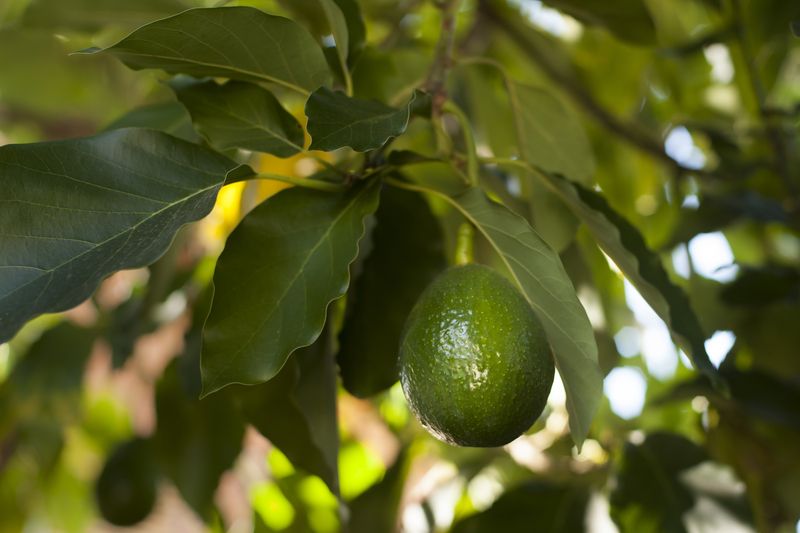Gardening as a Catalyst for Climate Change Mitigation
Posted on 24/06/2025
Gardening as a Catalyst for Climate Change Mitigation: A Comprehensive Guide
Gardening for climate change mitigation is rapidly gaining attention among sustainability enthusiasts, environmentalists, and everyday homeowners. As the planet grapples with rising global temperatures, frequent extreme weather events, and diminishing biodiversity, adopting sustainable practices is more crucial than ever. Embracing eco-friendly gardening not only enriches our surroundings but also significantly contributes towards reducing the effects of climate change.
This in-depth article explores how gardening serves as a powerful catalyst for climate action, its pivotal role in mitigating the impacts of global warming, and actionable steps individuals can take to make a considerable difference. Whether you're a seasoned horticulturist or a novice tending your first urban balcony, you'll discover valuable insights into climate-friendly gardening techniques and their long-term benefits.

Understanding the Link: Gardening and Climate Change
The relationship between gardening and climate change mitigation may not be immediately apparent. However, sustainable gardening practices can play a transformative role in sequestering carbon, promoting biodiversity, and reducing urban heat islands. Understanding this connection empowers individuals and communities to turn their green spaces into tools for positive environmental change.
The Role of Gardens in Carbon Sequestration
Plants, trees, and healthy soils absorb carbon dioxide--a major greenhouse gas--through the process of photosynthesis. This carbon is stored, or 'sequestered,' within plant tissues and the surrounding soil, effectively acting as a natural carbon sink.
- Trees and shrubs act as long-term carbon storage units, holding carbon for decades.
- Healthy, organic soils can store vast amounts of carbon released by decaying plant roots and organic matter.
- Even small home gardens, if managed sustainably, collectively contribute to reducing atmospheric CO2 levels in urban and suburban areas.
Gardening for Biodiversity Enhancement
Diverse gardens not only provide sanctuary to local flora and fauna, but also strengthen ecosystem services--like pollination, pest control, and nutrient cycling--all of which are crucial for climate resilience.
- Native plantings attract pollinators and beneficial insects.
- Water-wise landscaping conserves resources and supports habitat diversity.
- Wildlife gardens create microhabitats, enabling species adaptation to changing climates.
Urban Heat Island Mitigation
Gardens, green roofs, and vertical green spaces cool cities by providing shade and enabling evaporative cooling. Reducing hard surfaces and increasing vegetation lower temperatures, thereby lessening the need for air conditioning and cutting energy-related emissions.
Sustainable Gardening Practices That Combat Climate Change
Adopting a climate-conscious approach to gardening involves more than just planting flowers and mowing the lawn. Below are proven eco-gardening strategies that anyone can implement to help fight climate change:
1. Prioritize Native and Drought-Tolerant Plants
Native species are adapted to local climates, require less water and maintenance, and provide key resources for local wildlife. Drought-tolerant plants minimize water usage and are more resilient in the face of changing precipitation patterns.
- Research indigenous plant species suited to your area.
- Create waterwise xeriscapes in arid or drought-prone regions.
2. Practice Regenerative Gardening
Regenerative gardening replenishes the soil, increases biodiversity, and captures more carbon. Key methods include:
- Composting kitchen and yard waste to return organic matter to the soil, increasing carbon storage and reducing landfill methane emissions.
- Mulching to protect soil, retain moisture, and suppress weeds while adding nutrients back into the earth.
- Implementing no-dig or minimum-till gardening to prevent soil disruption and preserve soil carbon stores.
3. Grow Your Own Food and Edible Plants
Homegrown vegetables, herbs, and fruits reduce the need for climate-intensive industrial agriculture and lengthy supply chains. Food miles--the distance food travels from farm to plate--contribute significantly to greenhouse gas emissions.
- Utilize raised beds, containers, or vertical gardens to maximize food output in small spaces.
- Embrace crop rotation and companion planting to maintain soil health and reduce the need for synthetic inputs.
- Share surplus produce with neighbors to further cut waste and emissions.
4. Implement Water Conservation Techniques
Efficient water use is vital for both garden health and climate adaptation. Thoughtful water practices lower household consumption and safeguard local resources.
- Install rain barrels or catchment systems to collect stormwater for irrigation.
- Choose drip irrigation or soaker hoses to deliver water directly to roots, reducing evaporation losses.
- Mulch garden beds to retain canopy moisture and moderate soil temperature.
5. Avoid Harmful Chemicals
Pesticides and synthetic fertilizers contribute to greenhouse gas emissions during production and can harm beneficial soil microbes. Instead, opt for organic gardening methods:
- Use compost and natural amendments to enrich soil.
- Encourage pest control through biological diversity and natural predators.
6. Diversify Habitat Structures
Adding varied elements--such as wildflower meadows, ponds, and log piles--boosts garden biodiversity and builds resilience against changing weather:
- Install birdhouses, bee hotels, and native plant hedgerows to support pollinators and birds year-round.
- Leave some areas untidy for overwintering insects and other wildlife.
Gardening in Different Settings: Adapting to Urban and Rural Challenges
The impact of climate-resilient gardening depends on your location. Urban gardens, community plots, rural homesteads, and public parks each offer unique opportunities and obstacles in the fight against climate change.
Urban Gardening for Climate Mitigation
Urban green spaces are essential for countering heat islands, intercepting stormwater, and improving air quality. City dwellers can participate by:
- Establishing rooftop, balcony, or vertical gardens.
- Supporting or volunteering at community gardens.
- Lobbying for more green infrastructure in public spaces.
Rural and Suburban Gardens: Large-Scale Potential
Landowners and rural gardeners can make use of larger plots to:
- Plant woodland buffers and hedgerows to sequester carbon and support wildlife corridors.
- Adopt permaculture or agroforestry systems for productive and climate-adaptive landscapes.
- Create pollinator strips and meadows to support ecosystem health on a broader scale.
The Co-Benefits of Climate Adaptation Through Gardening
Climate-focused gardening delivers a spectrum of additional advantages for people and communities:
- Improved mental health from connecting with nature and outdoor physical activity.
- Enhanced food security and nutrition through local production.
- Reduced urban air pollution and better stormwater management.
- Stronger community bonds from collaborative gardening projects.
- Conservation of native wildlife and pollinators.
Common Barriers and How to Overcome Them
While sustainable gardening offers substantial climate mitigation potential, there are obstacles to wide adoption:
Access to Information and Resources
Many would-be gardeners lack knowledge about climate-resilient gardening techniques. Solutions include:
- Utilizing online resources, gardening books, or local extension offices for guidance.
- Joining gardening clubs or workshops to learn from experienced practitioners.
Limited Space and Urban Constraints
Small yards, balconies, or shared spaces need creative solutions such as vertical gardening, container planting, or participating in community plots.
Time and Cost Barriers
Gardening can be time-intensive and initially costly. Overcome these challenges by starting small, using recycled materials, and sharing resources with friends or neighbors.
The Future of Gardening as a Climate Solution
The cumulative effect of millions of individuals and communities adopting climate-smart gardening is powerful. Progress looks promising as more people recognize the impact of their choices on planetary health. In the coming years, we can expect:
- Wider adoption of regenerative and organic gardening methods.
- Innovative use of smart technology for efficient water and energy management.
- Collaborative, landscape-scale restoration initiatives led by local groups.
- Continued research on carbon sequestration and habitat restoration in gardens and green spaces.
Case Studies: Successful Gardening Projects for Climate Mitigation
1. The Incredible Edible Project (UK)
This community-run initiative transforms public spaces into edible gardens, reducing food miles and promoting local resilience. The project demonstrates how urban gardening can empower communities, decrease carbon footprints, and build food security.
2. Green Roofs in Chicago
Chicago leads U.S. cities in green roof development, with thousands of gardens installed on buildings. These roofs cool downtown temperatures, absorb rainwater, filter air pollution, and offer habitats for pollinators--all crucial for urban climate adaptation.
3. Agroforestry in India
Large-scale adoption of agroforestry (integrating trees, crops, and livestock) has improved soil health, increased biodiversity, and sequestered vast amounts of carbon in rural Indian landscapes.

Taking Action: How Readers Can Get Started
Becoming part of the gardening for climate change mitigation movement is accessible for everyone, regardless of experience or space.
- Start simple: Plant a few pollinator-friendly flowers or herbs in pots or a small patch of soil.
- Compost: Set up a kitchen scrap compost system to feed your garden and reduce waste.
- Participate: Join local gardens, conservation groups, or park restoration events.
- Educate: Share what you learn with friends and neighbors to spread climate-friendly gardening knowledge.
Conclusion: Harnessing the Green Power of Gardening
Gardening is far more than a leisure activity--it is a meaningful act of environmental stewardship and a pivotal element in climate change mitigation. Every garden, no matter how small, can serve as a carbon sink, wildlife refuge, heat island reducer, and community hub for climate resilience.
By adopting the principles of climate-conscious gardening, people everywhere can contribute to a healthier, more sustainable future. The collective impact of millions of gardeners making eco-friendly choices cannot be underestimated. Transform your garden into a powerful catalyst for climate action today, and be part of the global solution to climate change.
```
